The avocado is a tropical fruit that has achieved great acceptance in all parts of the world, mainly in Spain there is a large consumption of this. It is for this reason that its cultivation has been something that has been spreading and its growth process has aroused great interest..
Knowing how avocados grow on the tree can be very useful so that proper care is given to the plant and the fruit. For this, Next we will explain with images the phases of growth of this fruit in detail.
States or phases of avocado growth
The phases of growth avocado they can be differentiated according to appearance from the bud to the tender fruit. Below we explain them and provide a visual resource that will help you identify each phase.
State A
It is a phase called “bud in dormancy”, in this the buds are closed and of a color between yellow and gray, with acute form. Similarly, they can be noticed that they are covered with visible scales that denote their beginning of the cycle.
These yolks they generally appear on the same bud of the previous vegetative cycle. Also, they can appear in the terminals or in the axillary areas, in the upper area of the bud, but always very close to the apical bud.
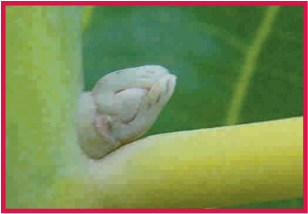
State B
This is a phase that is referred to as "swollen bud” and it can be differentiated when we notice that the scales of the yolk are a little darker. Similarly, these begin to spread out, apart that it is a little more rounded.
In this one begins to notice the bracts of an orange hue, which cover and protect the inflorescence, apart that they become visible. From this moment on, the induced bud rubbing is considered.
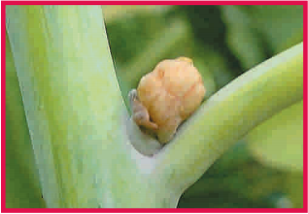
State C
It is this phase that the inflorescence. That is to say that the bracts of the inflorescence begin to open, so its flower buds turn pale green. Similarly, a greenish-yellow color can be seen between the bracts.
In this way it is like the plant protege the small clusters of panicles in formation and the flower buds.
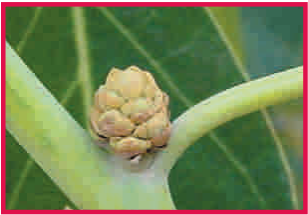
State D1
In this state, the flower buds, but it is still in the phase of secondary axis. On both axes, both the primary and the secondary undergo elongation and begin to become visible. The difference is that on this axis the flower buds are differentiated individually despite being grouped in its panicle.
It can also be distinguished that the bracteoles are still in constant protection from the flower buds of the clusters. In the same way, At its base, the bracts and their first scales still remain, with which they begin their development process..
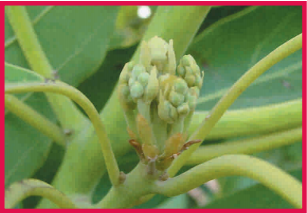
State D2
In this point, the flower buds are already entering a tertiary axis that becomes visible. From this moment, the elongation of the tertiary axes of the influence begins.. With this we can notice that during the three axes the color of these continues to be one color pale green and they continue widening.
Regarding flower buds, these begin to separate into clusters on the panicle. On the other hand, the bracteoles that are at the base, they will show a little extended outwards and slightly drier to the rest.
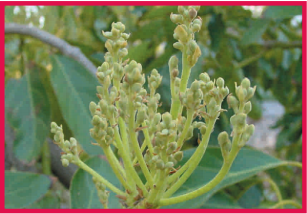
State E
This is a phase called the yellow button, because the inflorescence axes are elongated and differentiated in the panicle racemes. In it most of the bracteoles have detached or are withered.
In the case of the tepals, the flower buds are evident and these denote a distal end and a clear transfer of color. green or yellow. On the other hand, they have stopped being united to be separated.
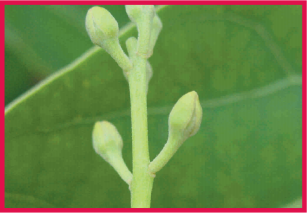
State F
This is the state of the bloom and in this you can notice various subparts of this process. In her, the anthesis of the flower panicles is evidenced staggered, but simultaneously synchronized. In this process there is ten parts different and we will divide the parts depending on whether the opening is female or male.
Substate F1f
This is when the flower begins to open in its female phase and its tepals open at a 45º angle.. In this case, their pistil is greenish white and they are completely erect and with a fresh stigma.. In the same way, its stamens are shown with a short green filament that constantly support and protect against tepals.
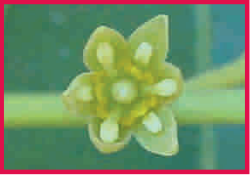
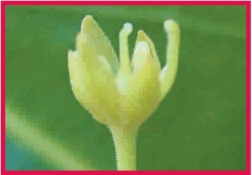
Substate F2f
This is called an open flower in the female phase and can be noticed when the flower is fully open.. In this, the tepals are arranged in a way that is completely perpendicular to the axis of the flower. Even so, its pistil is completely erect and with a fresh stigma.
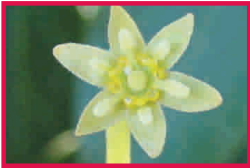
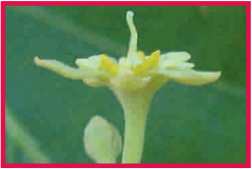
Substate F3f
In this one you can already notice that the flower begins to close in a feminine way. During this process the anthers that are not dehisced will begin to lift and tilt towards the center of the flower until it touches the pistil at one third of the length.. In this the tepals close, but the pistil and stigma are still fresh.
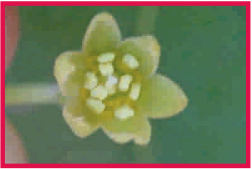
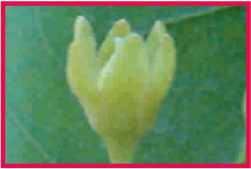
Substate F1c
In this phase it can be seen that the flower is completely closed. This is observed because the tepals are completely folded and protecting the center of their reproductive structures.. In this there is a greater length, as well as a slightly more yellowish tone.
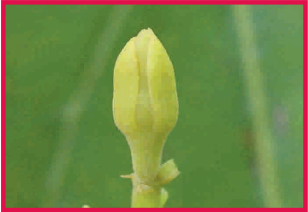
Substate F1m
In this state it can be seen when the male flower begins to open. In this it is noted that the tepals are a little more elongated and open at an angle of maximum 45º., while its pistil continuous erect. However, his stigma begins to darken.
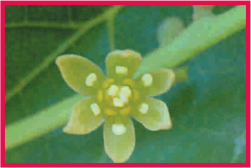
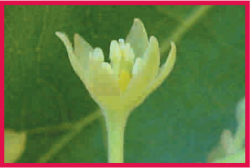
Substate F2m
In this phase the flower is open, but with the anthers not dehisides. In it the tepals turn yellow and reach the perpendicular to the axis of the flower. Regarding its stamens from the outer whorl, these are at an angle of 45º, while its anthers remain closed.
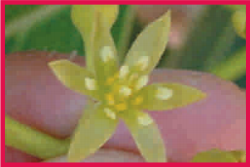
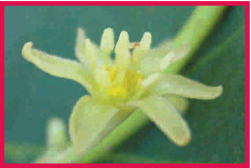
Substate F3m
This is a phase where the flower is still open, in its first dehiscence, there the anthers are the first to open their valves. Also, the tepals will continue their unfolding beyond the perpendicular to the axis of the flower.
In the case of nectaries, They are going to show a little raised and these are responsible for secreting a large amount of nectar, while the staminodes begin to wither.
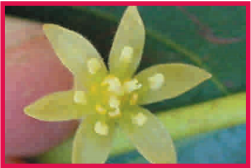
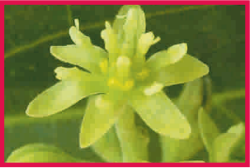
Substate F4m
In this phase complete dehiscence begins, because the flower reaches a full opening. The outer whorl of the tepal bends completely downward, while the interior still remains perpendicular to the axis of the flower. For his part, the stamens are kept with their anthers open.
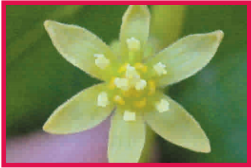
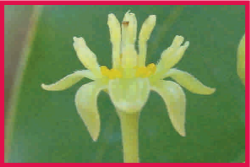
Substate F5m
During this phase the male flower begins to close. The first thing that happens is that the stamens of the outer whorl begin to rise towards the pistil and this is followed by the tepals as they turn yellow.. As for the pistil, it turns dark and somewhat winding, while nectaries no longer produce nectar.
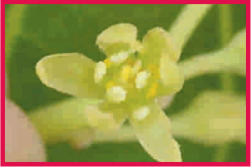
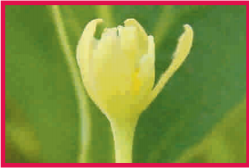
Substate F2c
Already in this phase the male flower is completely closed. In it, it can be seen that the tepals are long and show in the middle of their length the marks that have been opened twice. While, inside the stamens have surrounded the pistil. In this way, the ovary is completely protected..
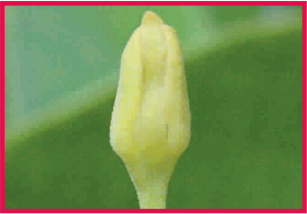
State G
In this phase the wilting of the tepals is already beginning to be noticed, from its apex to the base. In the case of flowers, these begin to become conical, while the whorls inside are still grouped.
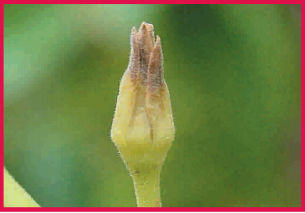
State H
This phase is called “curdling”, because the ovary already begins to turn green and begins to thicken. This happens in the center of the flower where it has been pollinated and fertilized later..
The stigma of this and its dry color begins to become noticeable united in the upper end of the ovary. In the case of the remaining floral pieces, these also begin to wilt and open due to the large growth of the ovary.
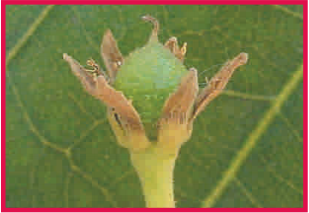
State I
This is the final stage called "Tender fruit" and in it the rest of the tepals and androcess have already detached., while the peduncle has already thickened. The expansion of this berry begins to give rise to a fruit that begins in the shape of a pear and in this you can notice a large number of lenticels.
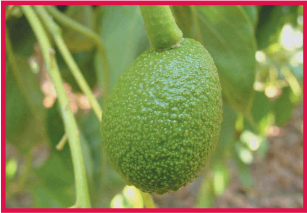
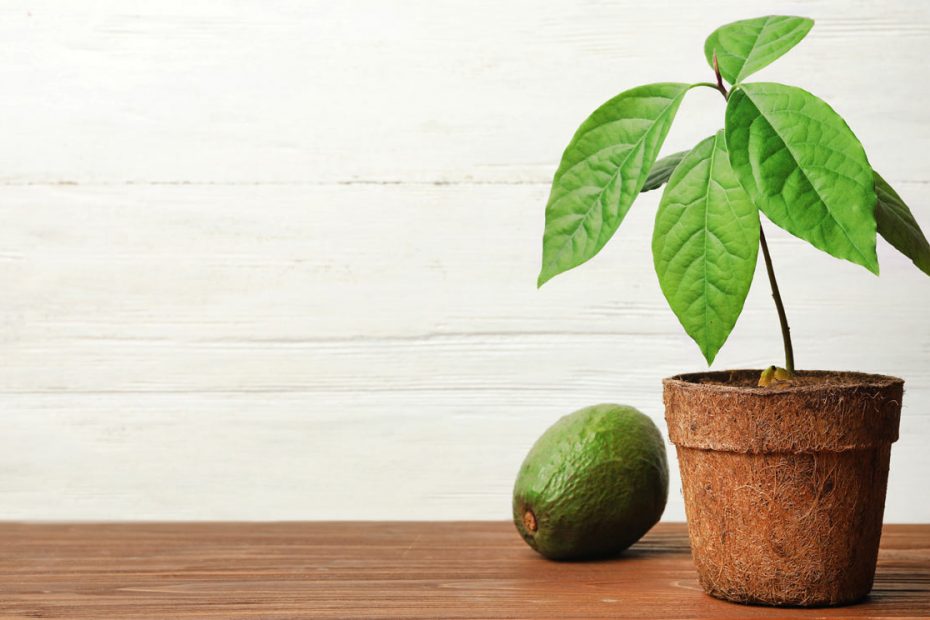
Pingback: How Does Avocados Grow: Unveiling Fruit-bearing Secrets
Comments are closed.